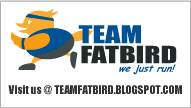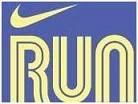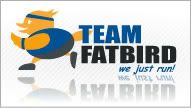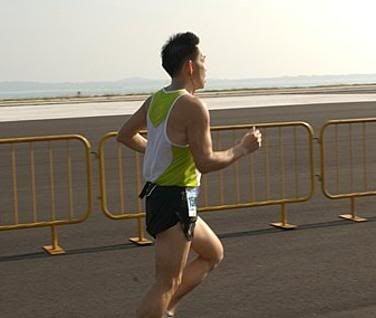Develop CORE Strength For Running
From The Atheletic Advisor
http://www.athleticadvisor.com/Weight_Room/core_strength.htm
The cornerstone of all athletic movements is the abdominal or core muscles. An athlete can train to increase strength, power, speed, agility, and quickness but if the core muscles are weak the athlete will not reap the full benefits of this hard work.
The core muscles serve as a force couple to transfer the power developed in the hips and legs into the arms and vice versa. A strong core will also help to protect the back from potential injuries associated with sport participation.
Not only is overall core strength important, just as valuable is core muscle coordination. Exercises that place the body in an unbalanced position help to develop the needed strength and coordination needed for the core muscles to function properly. These exercises must also be performed properly: the spine must be held in a neutral position with appropriate pelvic tilt.
Not Just Crunches
Crunches or sit-ups have been used for years to strengthen the abdominal muscles but, they have inherent limitations. Examples of these limitations are: the body position that crunches are performed in can not be found in sports, they move the body through a very limited range of motion, and they do not take into account upper body or lower body motions during the exercise.
Exercises using a fitness ball, stability ball, or SwissBall® can help to solve some of these problems. Each of these exercises is performed with a 5 to 10 second hold. Begin by performing 3 sets of 10 repetitions and increase numbers as strength, technique, and endurance improve, working towards completing 3 sets of 20. Choose the correct ball size based on height: 55 cm for 5’3” and under, 65 cm for 5’4” - 6’2”, and 75 cm for 6’3” and taller.
Exercise Suggestions

Body Weight Squats: Using the ball against a wall, tighten the abdominal muscles while maintaining a pelvic tilt, slowly bend the knees into a squatting position, hold for 5 to 10 seconds and return to the starting position. Perform 3 sets of 20 repetitions (3x20).

1 Leg Squats: Use the same technique described in 2 leg squats. Perform 3 x 20.

Prone Superman: Lay on ball at waist level, tighten back to raise chest parallel to legs with arms straight out in front. The goal is to look like superman flying. Be sure to keep the head in line with the spine, do not look up.

Prone Arm/Leg Superman: Same position as prone superman. Lift one arm and one leg so that they are parallel to the back. For a variation and a more difficult exercise lift the left arm and right leg.

Prone Row: Lay on ball at chest level. Keep back in straight line. Raise arms in a rowing fashion. Use weight (5 to 10 pounds) as needed for added resistance.

Prone Arm Walk: Begin laying on the ball at chest level. Using the arms walk forward, rolling the ball towards the feet. Return to start position. Be sure to keep the back and neck in proper alignment.
For added difficulty, once the ball is rolled to the lower shins, perform 5 - 10 push-ups while maintaining proper spinal alignment.

Supine Bridging: Lay on back with ball between shoulder blades. First, raise buttocks off of ground until neck, back, and thighs are parallel. Slowly extend one knee then raise that leg until parallel to opposite thigh. Place hands on stomach as a reminder to tighten abdominal muscles. Repeat with other leg.

Supine Bridge with Arm: Same position as previous exercise. While extending and raising left leg, slowly raise right arm over head until parallel with body. Try and perform both motions simultaneously while maintaining balance on the ball. Repeat with the other arm and leg.

Supine Torso Lift: Lay on back with knees bent over ball. Slowly lift torso until back is a straight line with legs. Use arms on floor to assist with balance. As balance improves, place hands on stomach.
These are some examples of advanced stability exercises. Performance of these exercises just one day per week will help to improve overall athletic performance by strengthening and coordinating one of the most neglected muscle groups: THE CORE!















0 Comments:
Post a Comment
<< Home